Best budget mountain bikes 2024 – our test team's pick of sorted MTBs at affordable prices
We showcase the best budget mountain bikes made for proper trail riding
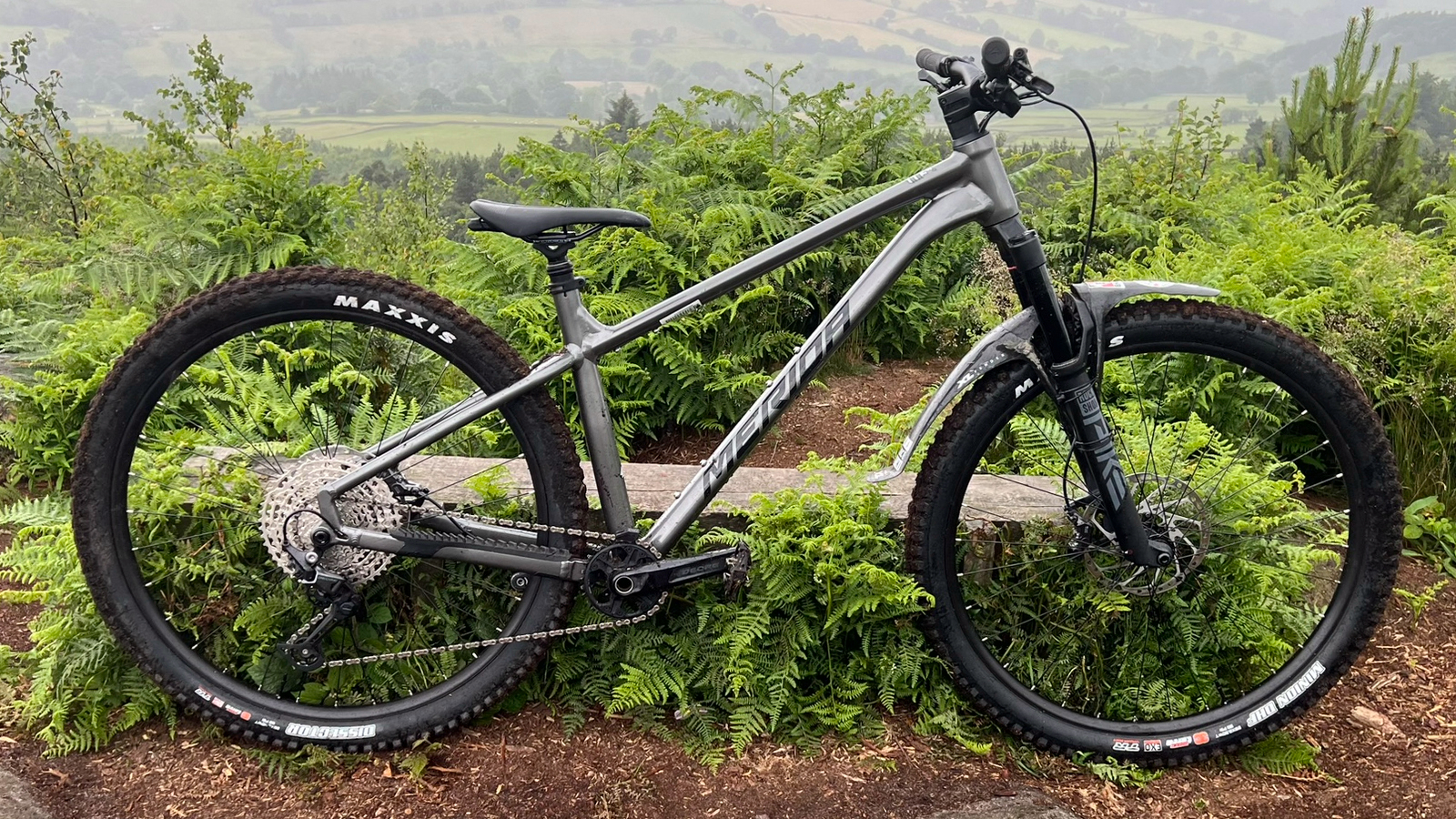
The best budget mountain bike market can be a minefield – choose the wrong one and it'll rob you of a fun-filled future, but buy the right one and it'll be the gateway to a lifetime of berm slapping and adventuring. Luckily, entry-level bikes no longer have to equate to trail-riding disappointment.
Our expert testers have many decades of experience riding affordable mountain bikes which is how we picked the best budget options here. Something to bear in mind when looking at budget MTBs is that there will always be compromises. If a bike has a great drivetrain, it might have a lower-end suspension in order to keep the price down or vice versa.
Once you buy a bike, you might find that you want to upgrade some of the components too. That doesn't have to be too expensive, so we've put together a buying guide for the best budget bike upgrades. If you're looking to spend a little bit more for a full-suspension trail bike or enduro bike. Also, check out our guide to the best mountain bikes under $1000.
As everyone's idea of 'budget' can differ, we've chosen a range of bikes across several price ranges to allow riders to match their expectations with a specific price point.
The quick list
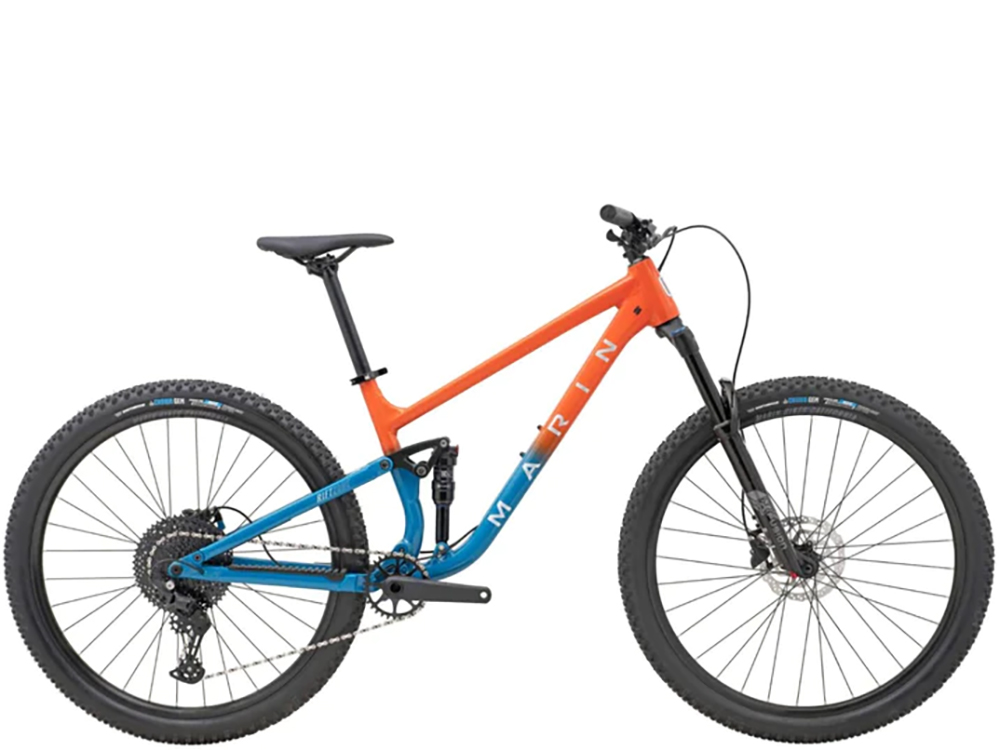
Best budget full-suspension MTB
A great full-suspension trail bike with excellent geometry, sweet paintwork, and potential for upgrades.
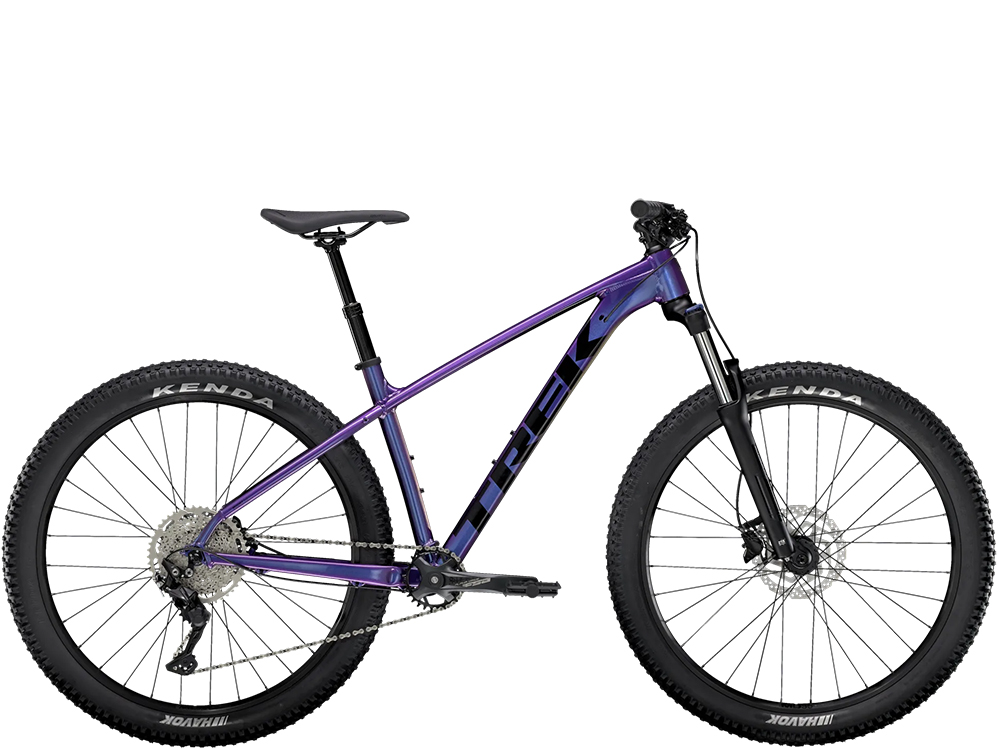
Best budget hardtail MTB
The plus-sized tires add comfort, and offer increased stability and predictable traction when riding trails.
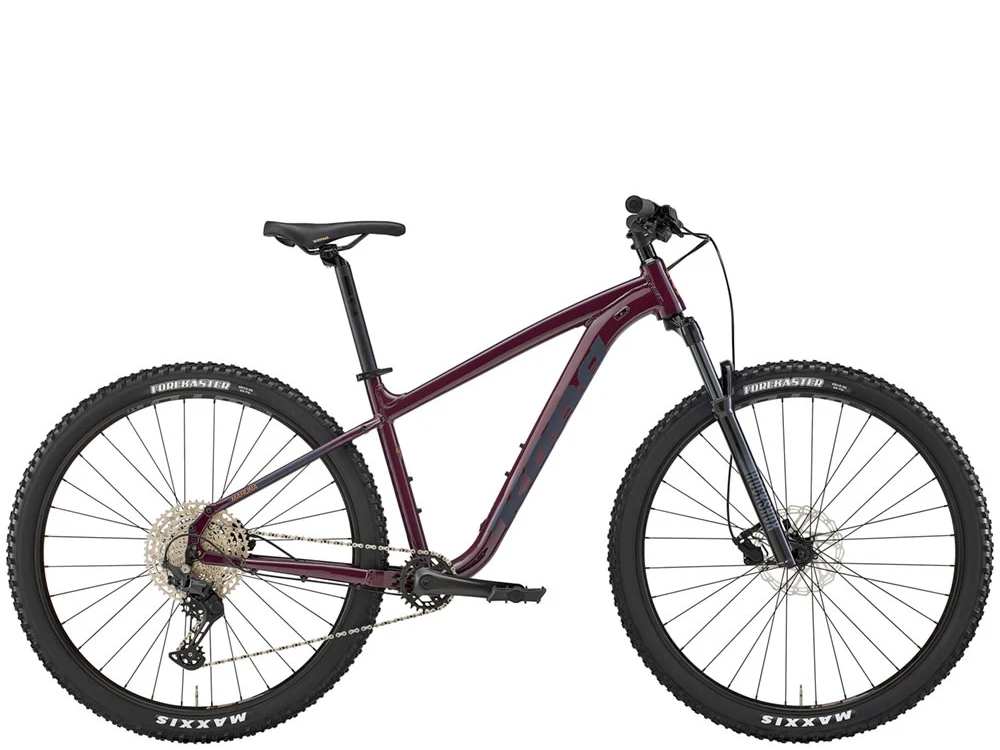
Best handling budget MTB
Impressively smooth riding, well thought out, and upgradable XC/distance bike.
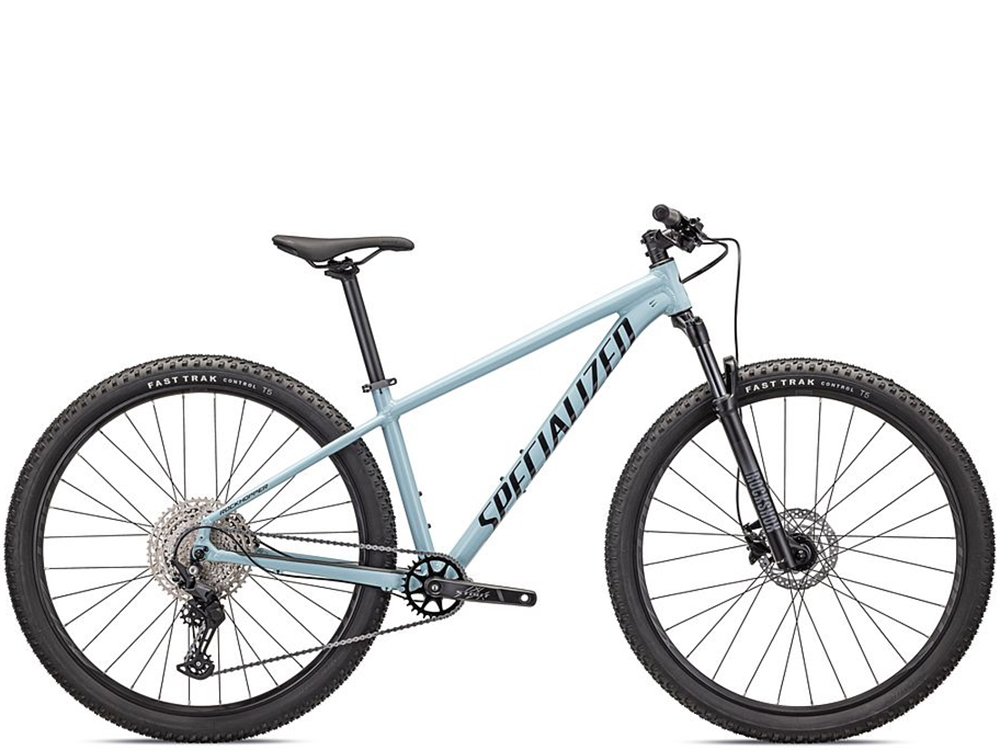
Best spec overall budget MTB
Offers an engaging ride and modern geometry, with best-in-class brakes, but limited upgrade potential.
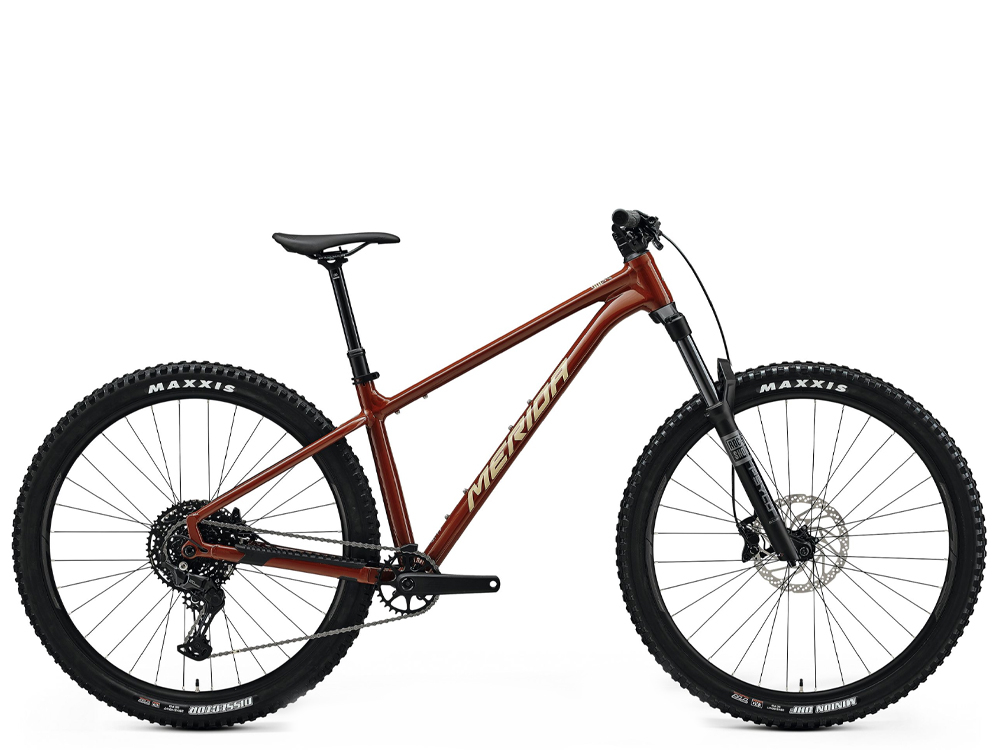
Best budget MTB for trail riding
Excellent trail geometry combined with a well-sorted spec, including a 140mm fork and 2.5 and 2.4in tires.
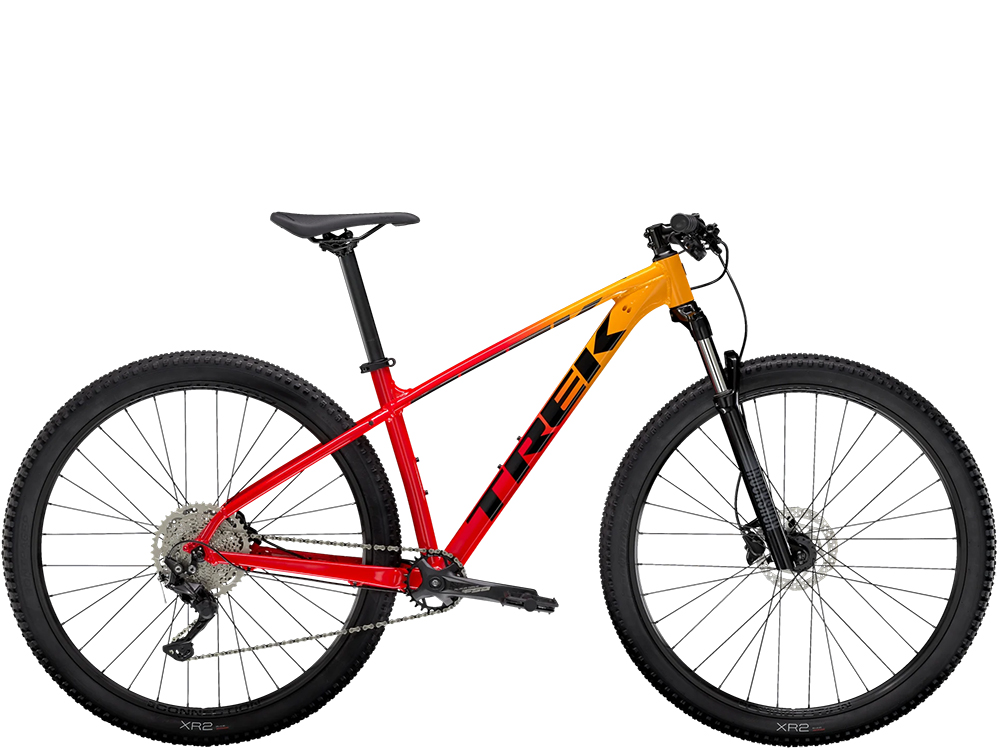
Best budget MTB for speed
Weighing under 30lbs, and with fast-rolling 29er wheels and a racey look, it's great for outright speed.
See the next 3 bikes ↓
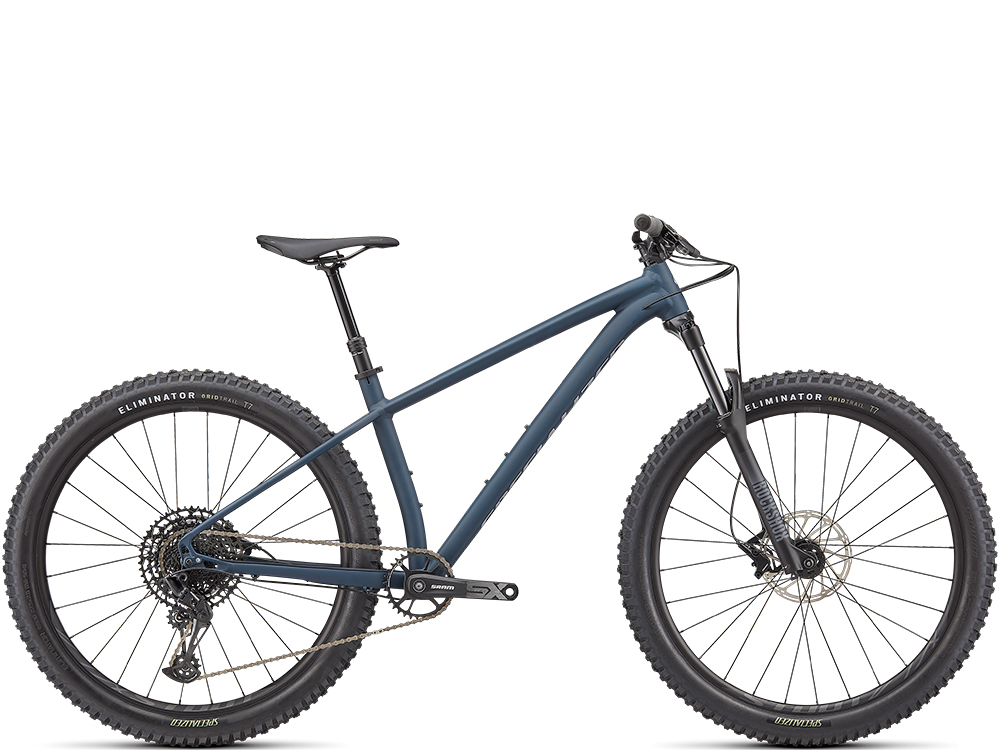
Best budget MTB for plus tire grip
With big 2.6in wide tires, a 66-degree head angle, feature-packed frame, and well-specced component list.
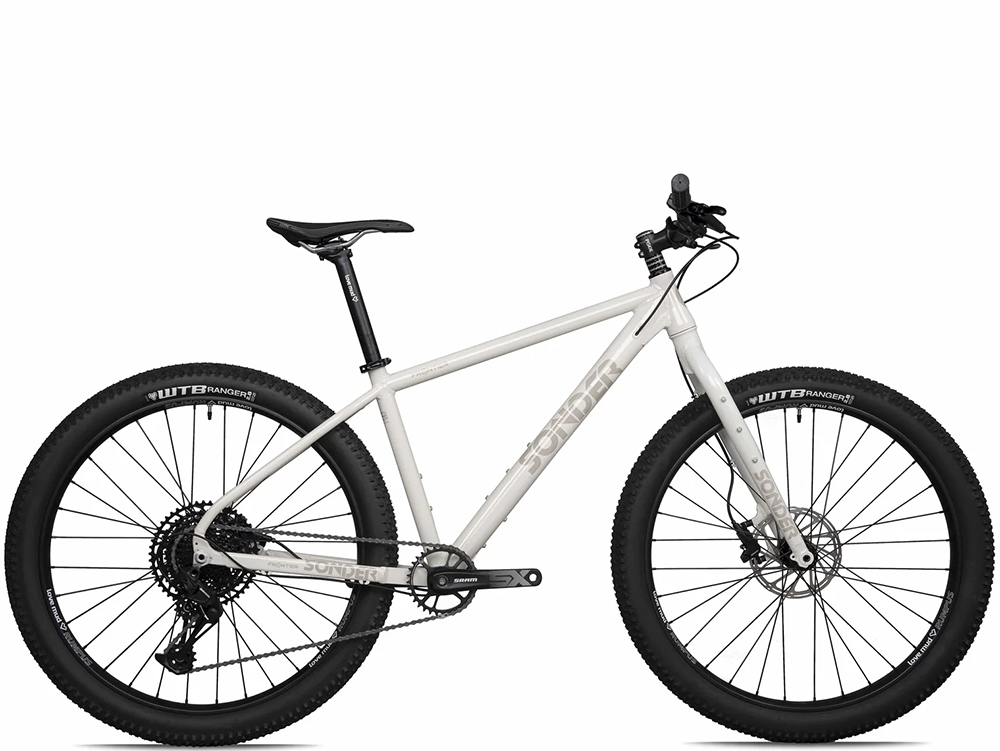
Best budget MTB for bikepacking
With a lightweight versatile alloy frame and loads of mounting points for bikepacking.
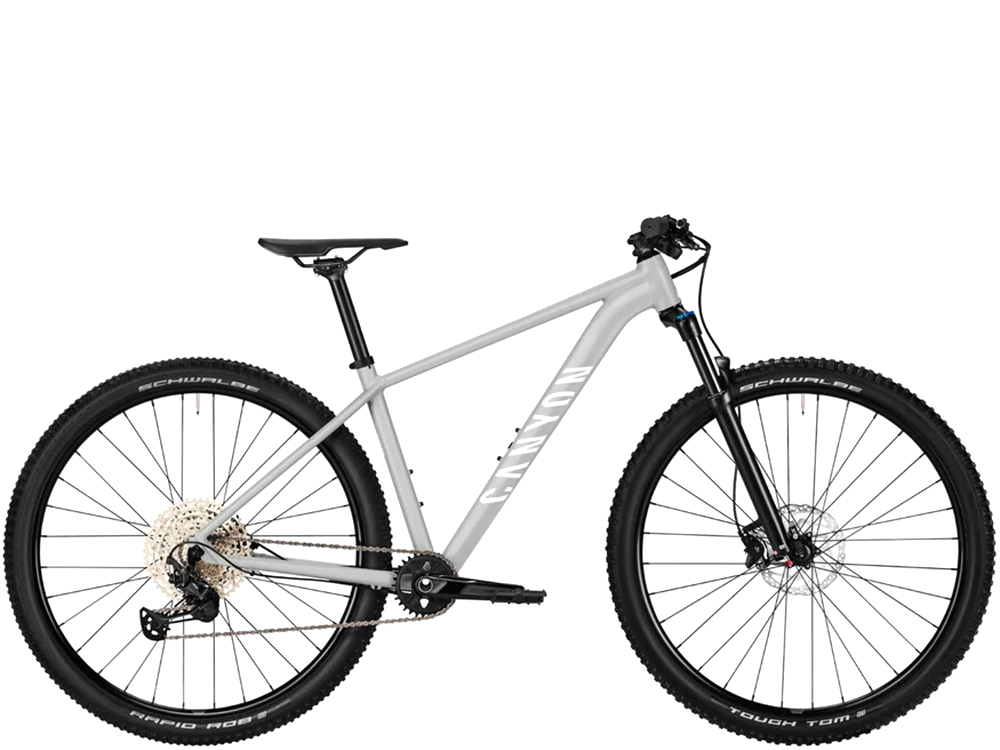
Best budget MTB for XC miles
Excellent value bike that caters to dedicated cross-country riders and covers miles quickly and efficiently.
Best budget mountain bikes
Why trust BikePerfect
1. Best hardtail
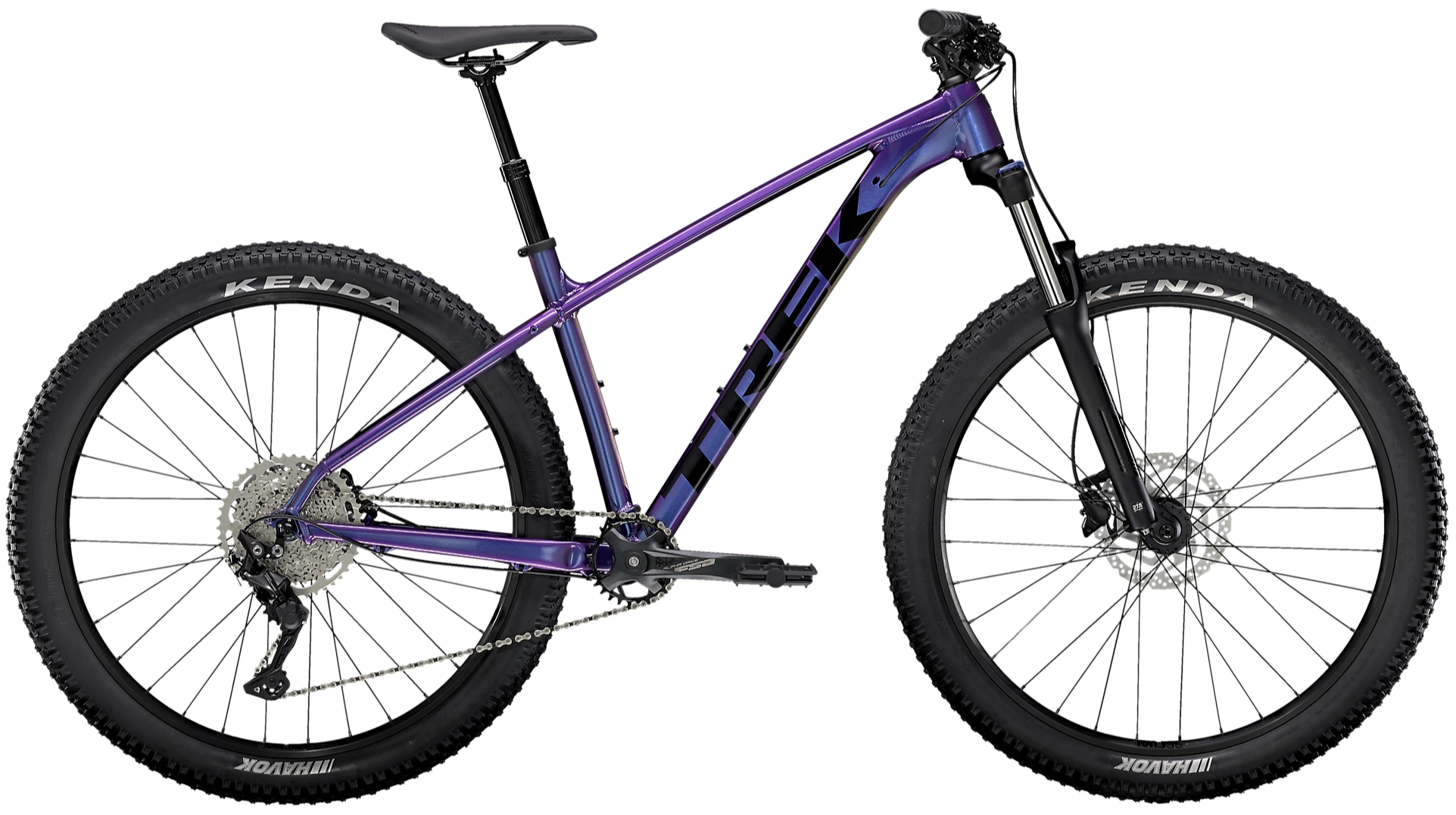
Trek Roscoe 6
Specifications
Reasons to buy
Reasons to avoid
The mid-fat, plus – or whatever you want to call it – platform has proven to be popular with beginner riders and dirt tourers looking for a little extra comfort and offering increased stability and predictable traction when riding trails.
Trek knows how to make a high-quality frame and the Roscoe comes with all the features and additions that you would expect on a modern hardtail that now includes Boost spacing on the fork and frame for increased stiffness and wheel upgrade potential later on.
The specification is what you'd expect from the Wisconsin brand, including a decent quality SR Suntour XCM 32 fork and Shimano drivetrain paired with Alex rims and Kenda Havok 27.5-inch tires. You even get a 130mm dropper post which is rare to find at this price point.
It must be noted that Trek updated the Roscoe range with new geometry, however, the Roscoe 6 still uses the old frame. Although it's almost 50 percent more expensive, If you can stretch your budget, the Roscoe 7 is far more capable and is a significant upgrade.
2. Best full-suspension
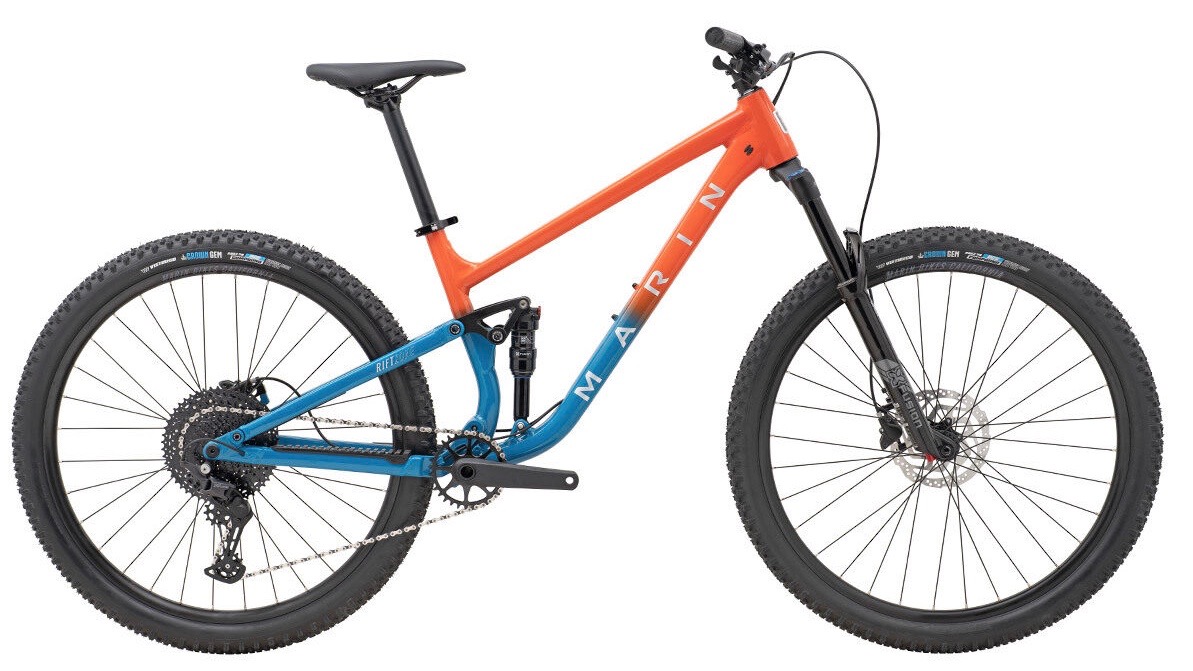
Marin Rift Zone 29 1
Specifications
Reasons to buy
Reasons to avoid
Bet you weren't expecting to see a full-suspension bike in our list of the best budget mountain bikes, yet, Marin have pulled it off. We're also loving the new eye-catching two-tone paintwork.
Not only does the Rift Zone have the on-trail benefits of full-suspension – adding confidence, grip, and control – it also manages to budget in a solid spec sheet that rivals some equally priced hardtails.
There are a few compromises – there's no dropper post and the X-Fusion rear shock is basic rather than brilliant. But overall, the Rift Zone is still a proper bargain and you can upgrade these components later if you wish.
As to be expected from an established brand like Marin, the geometry is sorted as well, with a 65.5-degree head angle, 77-degree seat angle, and decent reach numbers which put you in a great position to shred the trail both up and down.
3. Best handling
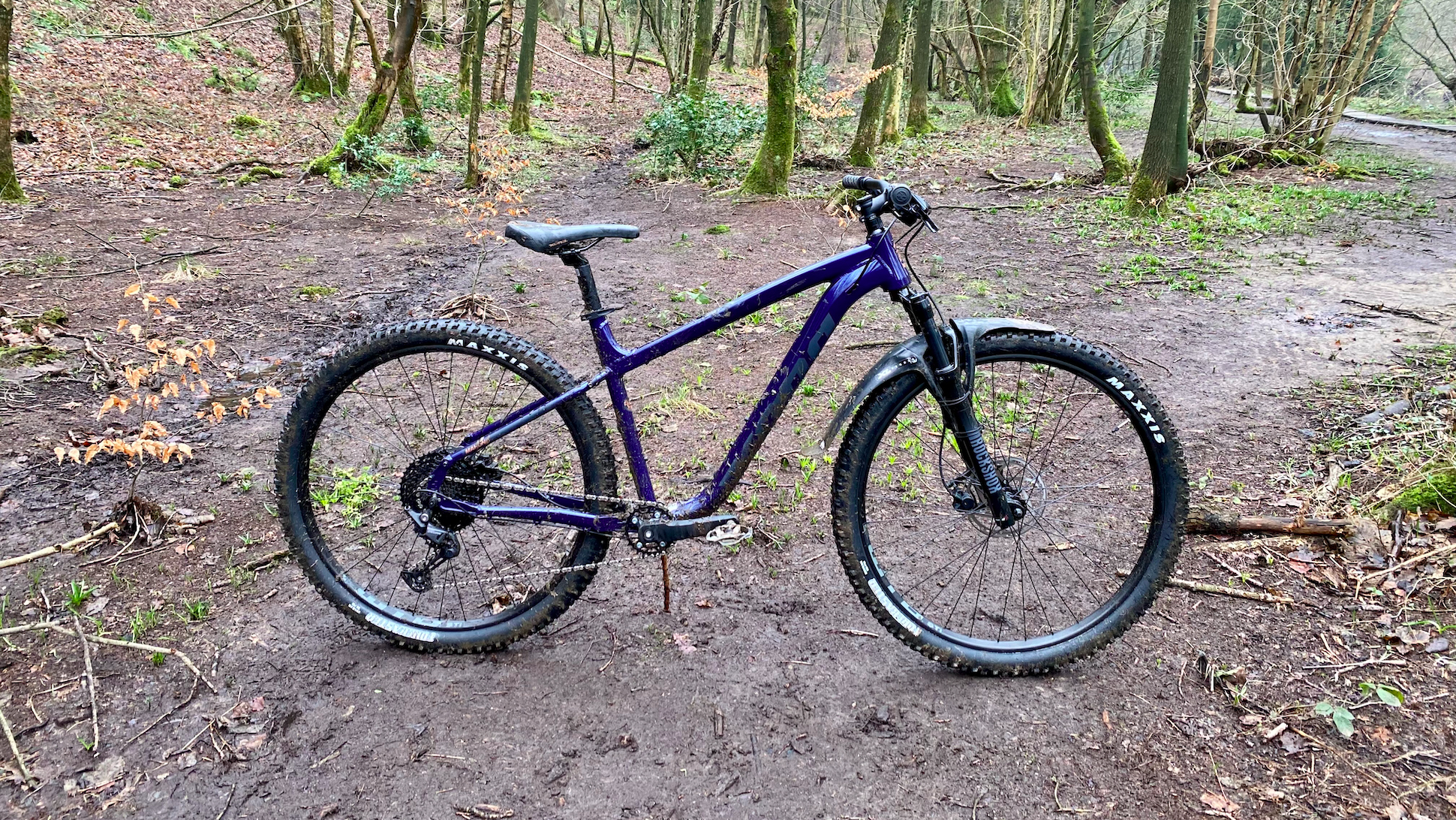
Specifications
Reasons to buy
Reasons to avoid
Kona has been around since mountain biking’s earliest days, and the Mahuna is its latest take on a versatile entry-level hardtail.
Despite a heavier than average weight, in our tests we found the Mahuna’s surprisingly smooth ride results in a true all-rounder that feels confident and composed across a variety of terrain, although it’s faster-paced XC trails that really bring the Kona to life.
A relatively conservative 68-degree head angle ensures responsive steering when descending and precision while climbing, and the 60mm BB drop keeps rider weight low and stability high throughout all on-trail situations. Riders in-between L and XL frame sizes may be in a predicament though, as there’s a hefty gap between reach and seat tube measurements.
Certain specification options can make it feel like it’s out of its depth on more technical terrain though, which means it's best suited to riders on the search for an upgradable XC/distance contender at a killer price point. Something that the two bottle mounts also lend themselves to.
The fact that the Mahuna is available through true brick-and-mortar bike shops is a big bonus, plus its frame is covered by a lifetime warranty which reinforces the purchase as a quality investment.
Beyond the frame, Kona has specced Shimano's superb Deore 11-51t, 11-speed groupset, although depending on your location you may get Microshift XLE 11-46t 11-speed instead. WTB ST i27 wheels are paired with Maxxis Forekaster 29 x 2.35-inch tires for decent rolling performance.
Our reviewer Guy Kesteven summed up: "If you’re after a surprisingly smooth and cultured ride with an easy-speed XC vibe then the quality upgradable frame and decent wheelset of the Mahuna get you off to a great start and guarantee a fresher finish than a slacker, sturdier trail-style hardtail."
Check out our comprehensive Kona Mahuna bike review for a more in-depth look into how it performs in the real world.
4. Best spec overall

Specifications
Reasons to buy
Reasons to avoid
If you’ve read our very recent review of the Rockhopper Elite 29 you’ll see that during the testing period we were left in a conundrum between excellent ride-feel attributes and several upgrade limiting design features; as a result, the Rockhopper is brilliant for some riders, but a total non-starter for others.
On the trail we found the Rockhopper’s low weight provides an energetic and lively ride feel that encouraged us to stamp on the pedals with enthusiasm – a characteristic which, when paired with the smooth RockShox Judy air-sprung fork, low bottom bracket and fantastically well-modulated Shimano MT200 brakes, makes the Rockhopper ooze confidence on the trail.
The shine of these quality ride attributes quickly started to vanish as we took a deeper look into the Rockhopper’s construction though, and it's the straight non-tapered head tube that’s the major flaw here. With all the best aftermarket suspension forks featuring tapered steerer tubes, there’s no room for the Rockhopper’s front end performance to grow as time goes on.
If it wasn’t for the upgrade-limiting design overlooks, the Rockhopper has the potential to be one of the best-performing bikes in its category. Our reviewer Jim Bland says, "If you think you’re a rider who will keep things stock and just ride, the Rockhopper’s trail prowess, excellent brakes and sorted gearing make it a great riding option that should provide years of fun."
For more, check out our in-depth dive into all areas of the Specialized Rockhopper Elite’s construction and performance.
5. Best for trail riding
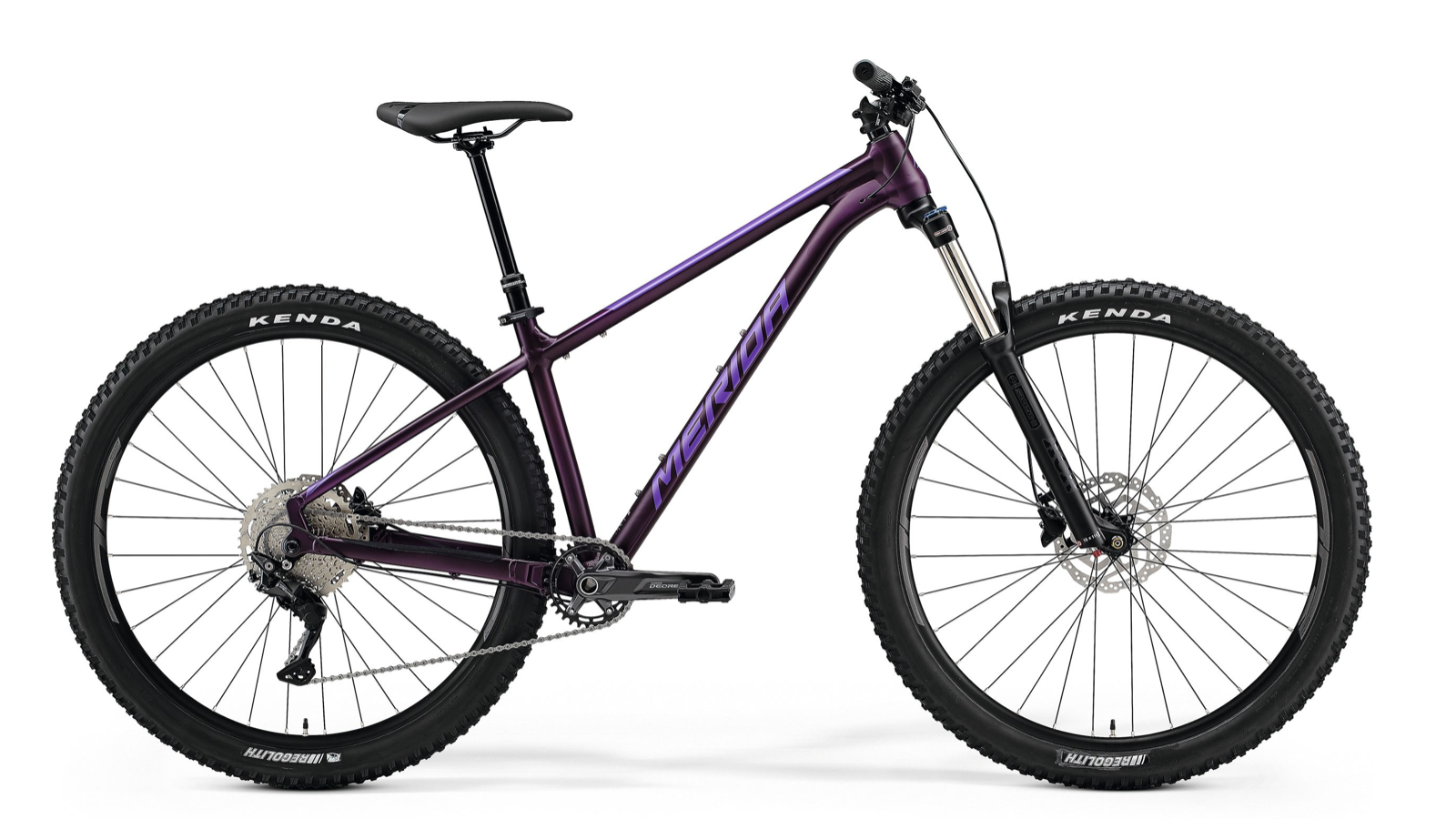
Merida Big Trail 500
Specifications
Reasons to buy
Reasons to avoid
Merida has just redesigned its Big Trail hardtail and the result is an even more sorted trail steed than before.
The previous model had really well dialed-in geometry and an excellent ride feel, but the new version has even more confident handling guaranteeing good times on genuinely big trails.
While the 140mm RockShox Psylo fork, Shimano Cues groupset with hydraulic brakes, 2.5in wide tire up front with a 2.4in rear, and a dropper post are all obvious highlights, there's some great 'hidden' detailing too.
Short seat tubes let you size up or down to get the reach you want for the kind of riding you do. There are twin bottle mounts and an accessory mount for trail essentials, but also stealth kickstand and fender fixtures for weekday workhorse duties. What's not to love?
The new Big Trail range consists of three models, while we've featured the mid-price, mid-spec 500 here, all three bikes use the same excellent frame and setup, so the cheaper 300 model is well worth a look too if budgets are tight. We've also tested the more slightly costlier model, so see our Merida Big Trail 600 review for a verdict on how the bike rides.
6. Best for speed

Trek Marlin 7
Specifications
Reasons to buy
Reasons to avoid
The Marlin hardtail family are Trek's best-selling mountain bikes, which makes them some of the most popular in the world. It's easy to see why with the Marlin 7s under 30lbs weight, fast-rolling 29er wheels, and racey look that's complemented by fiery paintwork all making it a standout performer.
Trek has also taken the super smart decision to scan its warranty data and only use the most reliable equipment. This includes Shimano Deore gears, hydraulic brakes, and a RockShox Judy fork which means you get to ride more and worry about maintenance less.
The relatively steep 69.5-degree head angle, narrow, low-rise handlebars, slim 29er rubber, and lack of dropper post definitely make it a racer, not a raver.
However, if you're after maximum speed or just efficient, comfortable long-distance mileage over mixed terrain, the Marlin is one hell of a catch.
7. Best for plus tire grip
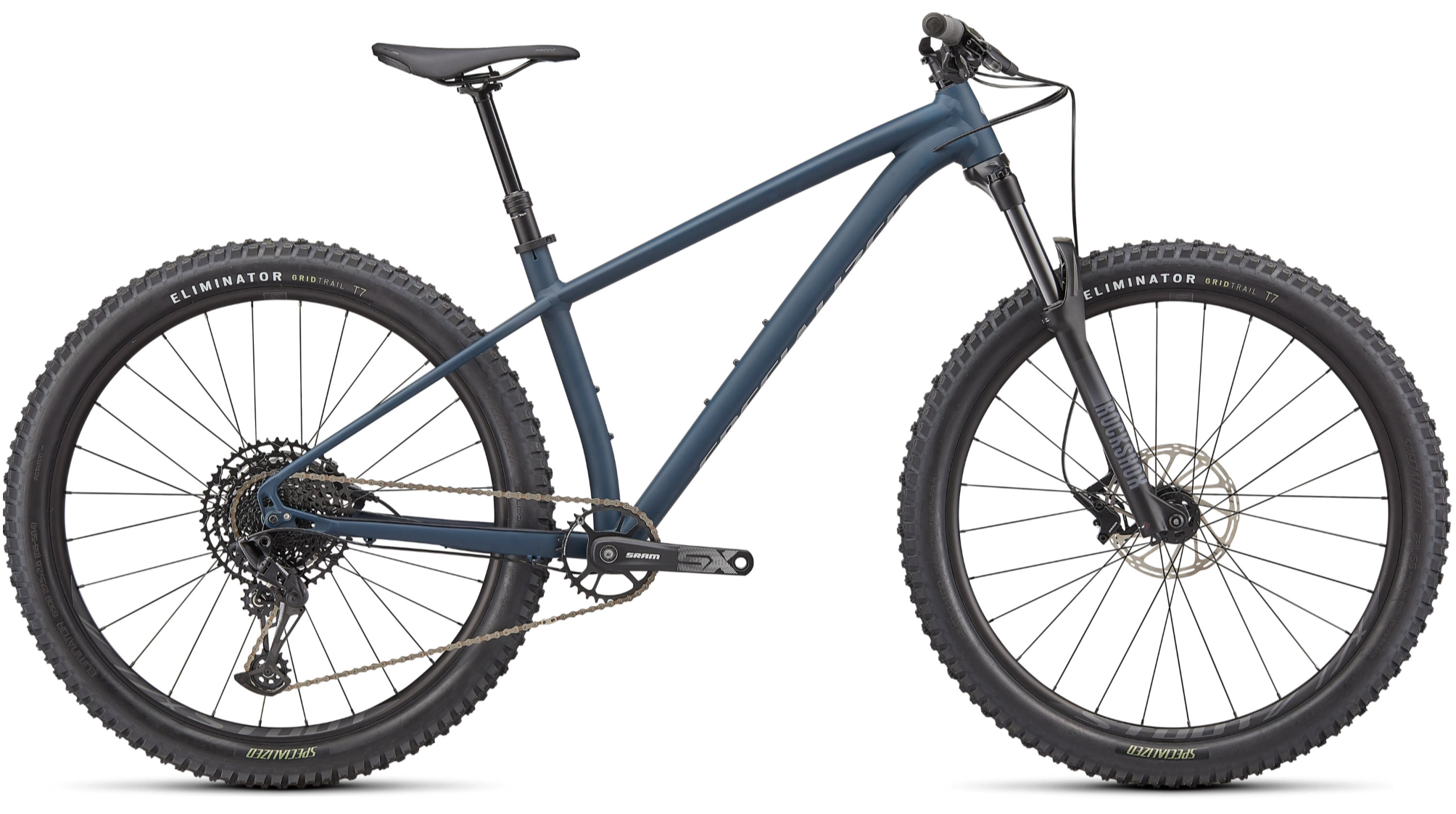
Specialized Fuse Sport 27.5
Specifications
Reasons to buy
Reasons to avoid
After catching everyone's attention when they first appeared around 10 years ago, bikes with plus-size tires have since become a bit of a flash in the pan.
That's not to say they don't serve a purpose with many riders – from beginner to expert-level – loving the extra grip and comfort that big, wide tires bring to the table – though they can be a handful in the wet, and ideally, set up tubeless so you can run low pressures.
The Fuse is a top bike for those looking to tackle singletrack comfortably and confidently thanks to the 66-degree head angle, feature-packed frame, and well-specced component list.
Those big 2.6-inch wide tires work their magic when combined with a 130mm RockShox Judy fork, SRAM SX Eagle 12-speed drivetrain, and a TranzX dropper post.
Plus, you'll be able to find one easily in your local Specialized shop, so getting your hands on this bike really shouldn't be a problem.
8. Best for bikepacking
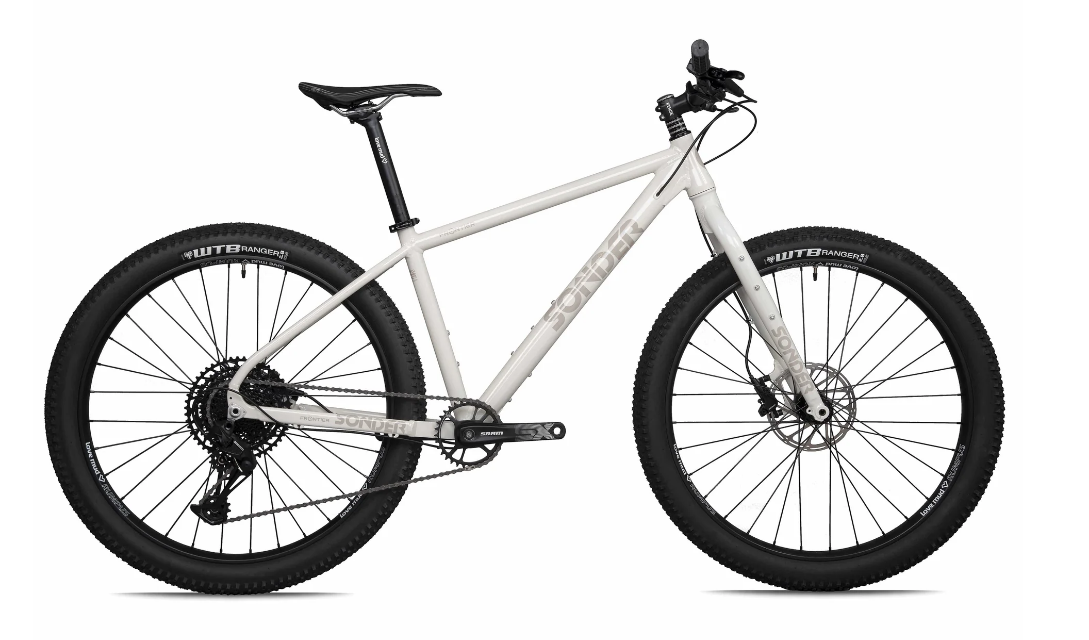
Sonder Frontier Deore Rigid
Specifications
Reasons to buy
Reasons to avoid
Not all mountain bikes are designed to shred rock gardens and not all mountain bikers are out to get gnarly. If the idea of multi-day adventures is more your thing then the Sonder Frontier is a great option for bikepacking. The durable alloy frame keeps weight down, has boost spacing and there are three bottle cage mounts on the frame, plus triple bosses on the forks to mount bottle or accessory cages.
While the complete bikes all come with 29er wheels, the frame also has the capacity to clear 27.5x3-inch tires for those looking for a bit more comfort.
Taking to the trails on a rigid mountain bike is certainly an acquired taste that will test your skills, although the Frontier geometry should mean it’s still a blast on smooth flow trails. The rigid fork can also be swapped out for a 100mm suspension fork and there’s even internal routing for a dropper post, if that’s your thing.
Beyond simplicity and mounting options, another advantage of a rigid fork is it frees up some budget for Sonder to spec some better parts. That means you get a full Shimano Deore M6100 12-speed groupset including a wide range 10-51t cassette which will make light work of steep gradients when loaded with camping kit.
9. Best for XC miles
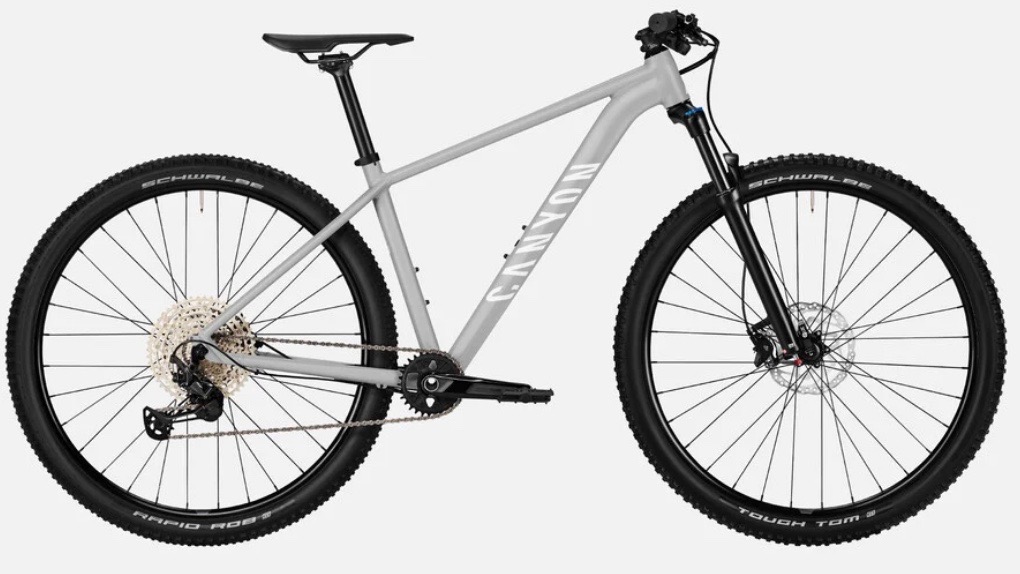
Canyon Grand Canyon 6
Specifications
Reasons to buy
Reasons to avoid
The Grand Canyon 6 caters to more dedicated XC riders than part-timers and is designed to cover miles quickly and efficiently.
Canyon has always been known for its stellar value and this model is no different, making its very reasonable asking price go a long way.
The Grand Canyon 6 comes specced with a Shimano XT 12-speed derailleur which is paired with a Shimano Deore 10-51t cassette for slick shifting performance.
A fast-rolling combo of Canyon own-brand wheels and 2.25in Schwalbe Tough Tom (front) and Rapid Rob tires (rear) work well in most conditions and keep the bike feeling spritely up punchy climbs.
As a bonus for smaller riders, the XS and S bikes come with 27.5in wheels for a better fit to create consistent riding dynamics across all sizes.
Best budget mountain bikes comparison table
| Bike | Fork | Drivetrain | Sizes |
|---|---|---|---|
| Kona Mahuna | RockShox Judy 100mm | Shimano Deore 11-speed | S-XL |
| Specialized Rockhopper Elite 29 | RockShox Judy 80/90/100mm | Shimano Deore 11-speed | S-XXL |
| Merida Big Trail 500 | RockShox Psylo Silver RC 140mm | Shimano Cues 1x10 | S–XXL |
| Trek Marlin 7 | Rock Shox Judy 80/100mm | Shimano Deore 1x10 | XS, S (27.5in) M, ML, L, XL, XXL (29in) |
| Specialized Fuse Sport 27.5 | RockShox Judy Silver TK 130mm | SRAM SX Eagle 1x12 | XS-XL |
| Marin Rift Zone 29 1 | X-Fusion Slide Boost RC 140mm | Shimano Deore 1x11 | S-XL |
| Trek Roscoe 6 | SR Suntour XCM 32 120mm | Shimano Deore 1x10 | XS–XXL |
| Sonder Frontier Deore Rigid | N/A | Shimano Deore 1x12 | S–XL |
| Canyon Grand Canyon 6 | SR Suntour XCR 100mm | Shimano Deore XT 1x12 | XS, S (2.75in), M, L, XL (29in) |
Things to consider when buying a budget mountain bike
Between us, our test team has tested a huge number of mountain bikes of all price points over the years. That's helped us identify exactly what to look for when buying a budget mountain bike. If the bike you're interested in ticks all the boxes on our checklist below, it's likely to serve you well. If you want more detail after reading this, check out our article 5 must-have features on budget mountain bikes.
- Geometry: Modern frame geometry can deliver a confidence-inspiring ride without the need for state-of-the-art suspension. A key number is the head angle – look for numbers less than 67 degrees, anything over that is likely to feel twitchy and nervous in trail situations. Reach is also a key factor, as longer numbers here will also help to boost trail confidence, though going too long can feel uncomfortably stretched for the rider. Look for around 470mm for a large frame, 450mm for a medium frame and 430mm on a small. If you want more on this, see our article on mountain bike geometry explained.
- Brakes: MTB brakes have moved on from grabbing the wheel rim to using specially designed discs (like most motor vehicle brakes) also known as rotors. Disc brakes are much more effective and come in two varieties – hydraulic and cable-operated (aka mechanical). Hydraulic brakes give more reliable stopping as the calipers self-adjust as the pads wear down, but cable operated are decent too. Out of the two types, we'd opt for hydraulics every time though. For more, see our mechanical vs hydraulic disc brakes article.
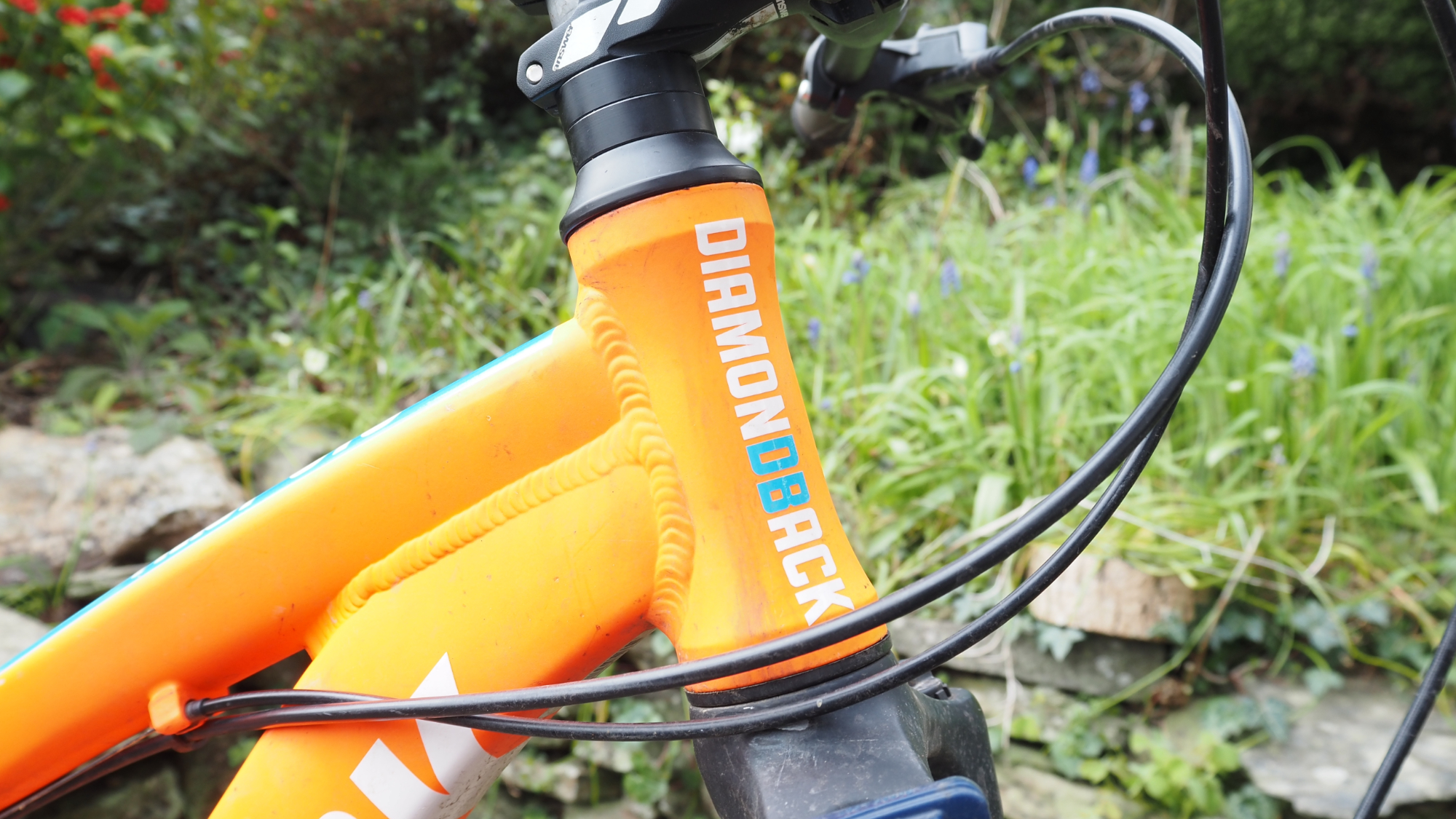
- Skinny head tubes: The short explanation here is to just avoid them. Beneath your frame's skinny and straight head tube is a fork with a straight steerer. Straight steerers are an outdated fork standard as most forks now have tapered steerers that are wider at the bottom, and narrower at the top. While straight steerer-equipped forks aren't necessarily worse than similarly specced tapered models, if you want to upgrade to a better fork later on, you're unlikely to find anything that fits your frame.
- Thru-axles: Rather than using a skinny QR skewer rod (that hasn't moved on since they were invented in 1926!) to attach your wheels to your bike, any mountain bike worth its salt these days uses bolt thru-axles. They are threaded tubes that are much stiffer and more secure than QR wheel skewers and will ideally be on the fork and rear dropouts. Look for 'Boost-width' (110mm wide at the front and 148mm at the back) as this is the most commonly used standard these days, so will give you more choice if you decide to upgrade your wheels later.
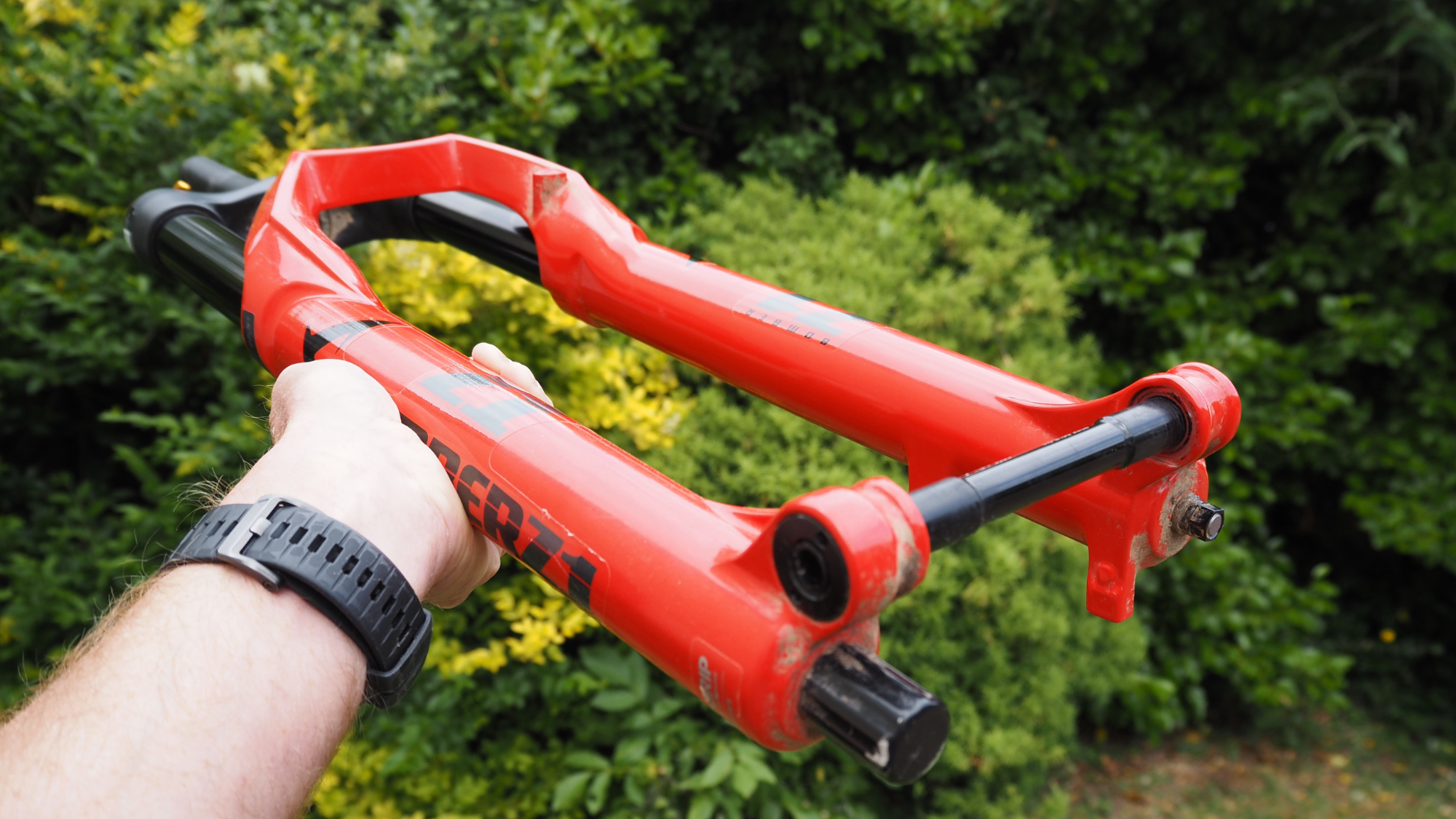
Best budget mountain bike FAQs
How much should I spend on a mountain bike?
So when it comes to how much is a mountain bike, what should you be looking for? With the price of mountain bikes varying from $200 to $15,000 there's no right or wrong answer to this question, but there are some guidelines worth sticking to.
As a general rule we think that if you're looking to spend $2,000 or less, the best hardtails are where you should be putting your money. Due to the additional development, material, and moving parts, full-suspension bikes at this price point tend to be heavily compromised, which in reality will probably make them ride worse than a properly sorted hardtail anyway.
To get reliability and performance from a full-suspension bike you should be looking to spend around $2,500 as this will get you a quality handling bike from a major brand that won't fall apart before you've even reached the trailhead.
What about buying second-hand?
While there are some total bargains to be had, buying second-hand can be risky, especially if you don't know exactly what to look for. First and foremost you can say goodbye to any manufacturer guarantees and warranties, and it's almost impossible to prove if any previous maintenance goals have been hit correctly and on time. For some tell-tale signs of things to avoid, take a look at our article on 6 signs you need a new mountain bike.
Our advice would be to visit a tried-and-trusted bike shop or legit, customer-service-focused online retailer.
Are budget mountain bikes any good?
In short, yes, but they're not the total bargain they were a few years ago. We're not sure why, but more affordable bikes seem to have been hit hardest by price increases and component specs have dropped dramatically for a similar cost. Trickle-down tech and properly shaped frames mean you can still have proper off-road fun for under four figures though.
Even in the sub-$1,000 price range, you should be expecting an air-sprung fork and decent-quality tubeless wheelsets. The ideal rim width for most forest and mild singletrack riding is around 25mm, although bikes more purposed towards descending will offer wheels with an internal rim diameter closer to 30mm.
Double-chainrings should not be a feature at this price point, with most brands capable of fitting 1x12 drivetrains crafting a cleaner appearance for your bike, and better chain life, thanks to a straighter chain line.
There is no excuse to feel uncomfortable on a mountain bike in the sub-$1,000 class either, as designers have experimented and discovered the best blend between slacker head angles and longer reach numbers, delivering superior high-speed stability and climbing comfort.
Are full-suspension mountain bikes worth the extra expense?
You will have noticed that our choice of the best budget mountain bikes is mostly hardtails rather than full-suspension bikes. The reason for this is that if you are working to a tighter budget you will often find that brands make critical compromises to the spec of a bike in order to cover the additional costs of development, suspension system hardware, and shock.
The fact that most big manufacturers don't bother to risk their reputation on compromised low-cost suspension bikes should be a warning too. That's because most full-suspension rigs from 'bargain' brands have outdated geometry as well as poor quality forks and shocks – and will actually ride worse than a sorted hardtail for the same money.
That said, there are some brands, like the Marin and Vitus featured above, that manage to add front and rear suspension without sacrificing the overall performance of the bikes. Neither features a dropper post though, and components will generally be of a lower quality than a hardtail of the same price.
What do I need before I can hit the trails?
It goes without saying, but buying the best possible helmet you can afford is an absolute must before you even think about hitting the trails.
Getting pedals with your new bike isn't always certain either, and due to them being a vital contact point, getting the right ones is crucial. If you're a new rider looking to hone your skills, or a seasoned rider who values playing in the woods then the best flat pedals are what you need. But if XC is your vibe and maximum efficiency is a priority, the best clipless pedals are what will deliver.
Some general spares like a chain link, small chain tool, and tube and pump are great things to carry on any ride too.
What should I upgrade first on a mountain bike?
Some of the best value is to be had in the sub-$1,500 segment – wide rims, appropriately sized tires, and generally terrific trail-orientated frame geometry have become standard features in this price segment.
Whatever you can save between your purchase price and your price budget ceiling, can be put toward a dropper seatpost upgrade. It may not seem like a priority upgrade, but speak to anyone who has one on their bike and they will all praise the performance and convenience of a dropper post.
Fitting the best mountain bike tires can transform a bike's personality for a relatively low outlay. Whether it's increasing grip, speeding up rolling resistance, or adding more comfort, fitting the best tires you can will greatly enhance your experience on the trail.
But in our opinion, the best upgrade any mountain biker can do to enhance their riding experience is to book some coaching.
How we test the best budget mountain bikes
All the budget mountain bikes tested here have been ridden on a wide range of trails, from singletrack to technical woodsy riding, in a variety of weather conditions, from bone dry to properly sodden. We test bikes over a number of months so we can assess how they fare over time.
Meet the testers
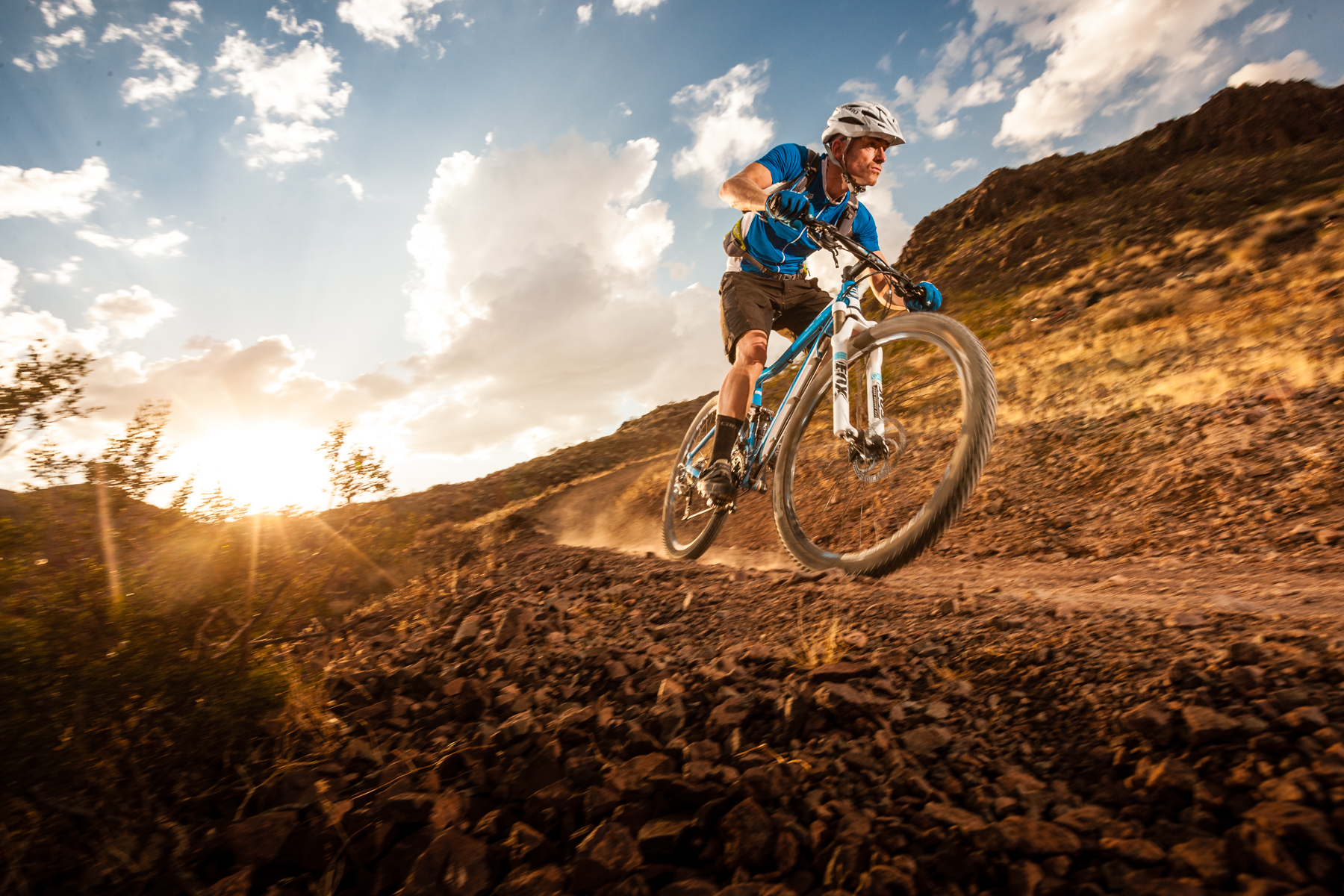
Guy has been writing about and testing bikes since 1996. Over the decades he’s tested a phenomenal amount of mountain bikes and ridden all the leading budget models.
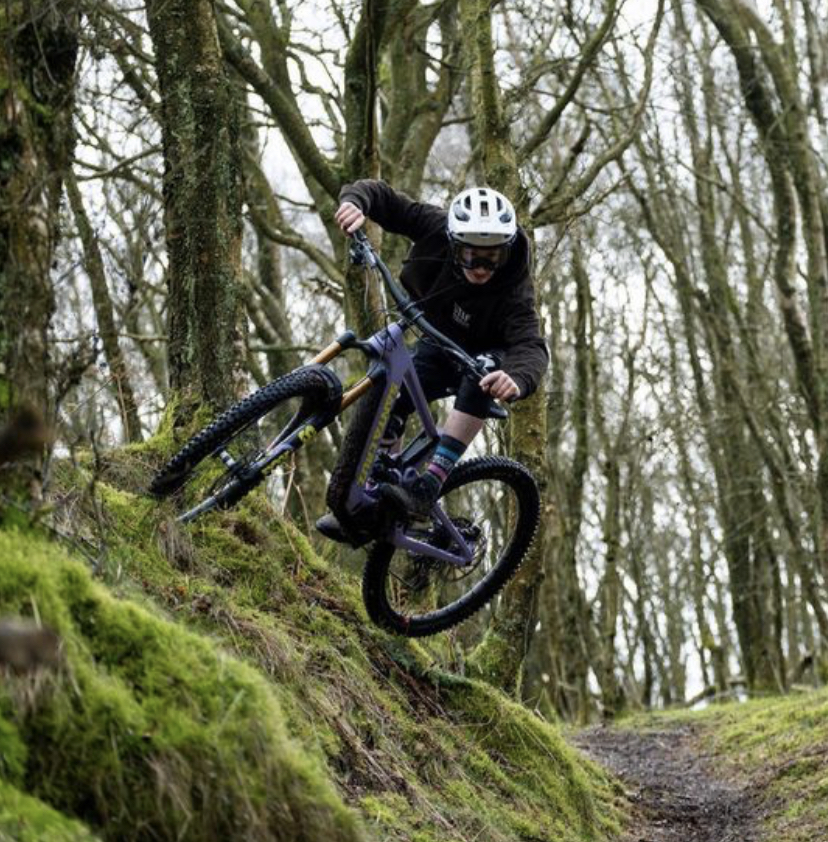
Jim Bland is a product tester and World Cup Downhill mechanic. Always on the hunt for the perfect setup, Jim will be found comprehensively testing bikes with World Cup racing levels of detail.

Guy Kesteven has been working on Bike Perfect since its launch in 2019. He started writing and testing for bike mags in 1996. Since then he’s written several million words about several thousand test bikes and a ridiculous amount of riding gear. He’s also penned a handful of bike-related books and he reviews MTBs over on YouTube.
Current rides: Cervelo ZFS-5, Specialized Chisel, custom Nicolai enduro tandem, Landescape/Swallow custom gravel tandem
Height: 180cm
Weight: 69kg
- Jim BlandFreelance writer
